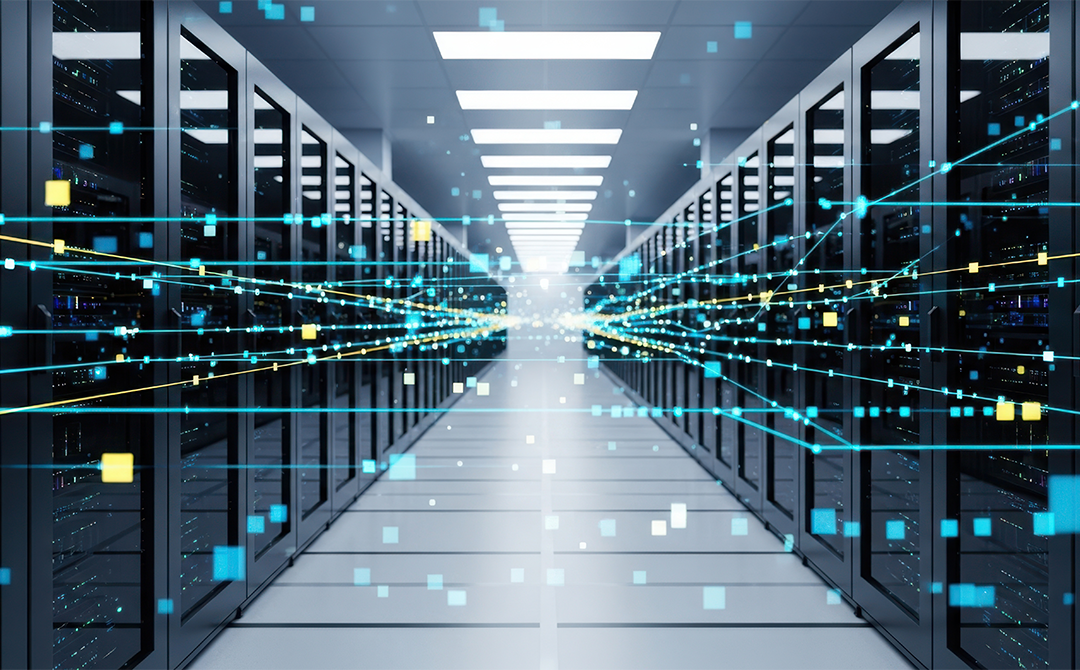
At its simplest definition, network optimization is the science and practice of structuring and analyzing interconnected systems so that resources, information, and products flow most effectively, all while continuously improving its continuous betterment. While analyzing the role of AI-driven network optimization in the supply chain domain, determining the best possible configuration automatically become a requirement. This configuration is important to run facilities, distribution paths, and inventory placement smoothly in a way that is balanced, cost-efficient, and matches up with the commitments made at the service level.
What Is Network Optimization in Supply Chain
The main reasons or goals outlining why you need network optimization in supply chains have traditionally included lowering logistics expenses, shortening lead times, minimizing stockouts, and creating resiliency in the face of disruption. For a modern enterprise operating across multiple nations, this sort of optimization inadvertently seeps also into its sustainability goals and regulatory compliance practices.
It has also made an excellent case when it comes to business impact, as its improvements can be clocked in real-time, with enterprises witnessing improvements firsthand. A well-optimized supply chain network is reportedly reducing transportation costs by double digits, improving service reliability by a significant margin, and enabling faster market entry strategies.
Leading global studies show that companies with advanced optimization practices are enjoying a significant reduction in total supply chain costs, which is directly translating into higher margins and competitiveness. In terms of market acquisition, North America will be singularly responsible for holding a 35.20% share of the global network optimization market by the end of 2025. Source
What is AI-Driven Network Optimization
Traditional optimization models in both supply chain and telecom rely heavily on what are called deterministic equations, linear programming, and heuristics. These problem models are designed for relatively stable environments, which help these two enterprises scale. However, today’s networks are getting more and more complex, interconnected, and volatile than ever before. This is why AI-driven network optimization has emerged as the biggest need of the hour.
So, what does this AI-driven approach incorporate? This approach includes machine learning, advanced analytics, and adaptive algorithms, taking optimization processes to a whole new level. Instead of static models that have to be constantly recalibrated, AI-driven systems are capable of learning on their own from streams of real-time data, adjusting decisions in a dynamic way, as and when conditions shift.
We believe that the future of optimization is best utilized when static domain knowledge is combined with AI techniques that are expandable. This means enterprises can avoid the typical pitfalls of what investors fear as “black-box” AI while still benefiting from real-time changes that this new technology is bringing. All of this is made easy by AI consulting partners such as Tredence, where we exclusively emphasize building accelerators that reduce deployment times. Our goal is to let CTOs and similar stakeholders focus less on network-related hurdles and focus more on how businesses can create more value.
Key AI Network Optimization Methodologies: Explained
AI-optimized networks are basically run on three major methodological pillars. AI-driven network optimization today is incomplete without them. So, here they are:
- Predictive Traffic Analysis – This involves using AI models to anticipate patterns in the way data flows, what customers tend to demand, or how logistical bottlenecks may arise in a situation. In generative AI telecom, it especially has an impact while predicting bandwidth surges across different regions and proactively adjusting spectrum allocation accordingly. In the supply chain, this very system helps anticipate seasonal spikes or disruptions, thereby informing proactive inventory placement.
- Reinforcement Learning- As evident by its name, this system is more of an adaptive decision-making mechanism. RL is marked by agentic AI (which is more useful in telecom) that interacts with its environment and learn from the outcomes. Over time, they refine strategies on their own, such as routing decisions, load balancing, or dynamic pricing, matching them with the best possible outcomes with regard to cost minimization or latency reduction.
- Metaheuristic Optimization – This technique is defined by processes such as genetic algorithms, particle swarm optimization, or ant colony optimization, all of which are known optimization processes in the supply chain. When co-opted with AI, they become very useful, especially when regular deterministic methods fail. These algorithms are better when tasked with optimizing vast enterprises, identifying the best possible strategies very quickly, and handling NP-hard problems common in supply chains.
Together, these methodologies enable organizations to manage uncertainty, respond dynamically to disruptions, and achieve optimization outcomes that were not feasible with traditional models.
Use Case 1: Telecom Network Optimization
Telecommunications operators face unrelenting pressure from two sides: exponential increases in data demand and rising customer expectations for spotless connectivity. Static network planning cannot keep pace with these pressures. So, AI-driven network optimization for telecom has already started making waves as the most viable and possibly only future-ready infrastructure. This infrastructure includes the following:
- Self-Healing Networks: With AI analytics (also known as telecom analytics) embedded in the network core, sudden disturbances such as packet loss, equipment failure, or latency spikes are detected in real time. The network then diagnoses the issue fast and implements corrective measures on its own, significantly reducing downtime in the process.
- Dynamic Spectrum Allocation: Rather than assigning spectrum bands on a fixed schedule, AI algorithms reallocate spectrum dynamically to handle fluctuating demand across different places in the world. This, in a way, makes sure that both rural and urban enterprise customers experience consistent quality of service.
- Resource Allocation: In this process, network resources are distributed intelligently across base stations and backhaul links. In this case, AI makes sure that service providers meet increasing demand while using maximum capital.
AI-driven network approaches are accelerating the functioning of telecom ecosystems at a never-before-seen pace. It is turning the whole enterprise into one that is proactive, built to withstand downtimes, and customer-centric, where interruptions are more of an exception rather than the rule. In fact 55% of AI investment currently supports efficiency initiatives like network performance optimization and automated customer service. source
Use Case 2: Supply Chain Network Design
Supply chains are generally more complex and prone to disruption, but AI-driven network optimization is helping them with a strategic framework that is building resilient and efficient supply chain structures.
For example, facility location decisions, usually based on static spreadsheets and fixed demand assumptions, are now incorporating predictive models to analyze thousands of scenarios, starting from global trade shifts to regional tax policies. This is making location decisions not just better but also tremendously faster. Multi-modal routing is another aspect that is benefiting from AI by identifying the most cost-effective combination of transport methods, considering real-time traffic and congestion, upcoming weather forecasts, and geopolitical risks, if any.
Inventory placement has become equally intelligent. Instead of merely applying safety stock rules, AI systems are analyzing purchasing behaviors, seasonality, and potentially disrupting events to determine the best stock levels across facilities. This balance ensures service continuity and working capital efficiency. When compared with traditional network design models, AI-driven approaches are not limited by static inputs and can adapt fluidly to global shocks, such as port closures or sudden demand surges during health crises.
Use Case 3: Enterprise WAN & SD-WAN Performance Management
For large enterprises, global connectivity is no longer a support function but the very foundation of productivity. Enterprise WANs and SD-WANs are connecting distributed offices, cloud services, and remote workers. Here, AI-driven network optimization is what’s bridging the difference between sluggish connectivity and smooth flow of communication..
This is where AI-driven network optimization proves its value. It will continuously monitor network traffic, predict congestion points, and dynamically reroute data to maintain the highest possible performance. With its help, teams and applications will get to experience smooth connectivity that directly translates into efficiency. It also brings forth a great deal of personalization with the help of AI, making the telecom industry better and closer than ever.
How AI-Driven Network Traffic Analysis is Making Actual Change
A major enabler of AI-driven network optimization is the ability to continuously monitor, interpret, and act upon traffic data. Through AI network traffic analysis, organizations gain a clear window into how their systems are functioning at any given moment.
One such fine example in the supply chain, presented by Tredence, is as follows. A US-based B2B chemicals manufacturer with over 100,000 active customer addresses faced high transportation costs due to suboptimal routing and address deconsolidation.
Tredence implemented its Sancus solution to validate and enrich address data (including non-English and international formats across 20+ countries), then layered an AI/ML-based route optimization tool on top of the client’s existing Transportation Management System. The project improved address quality (18 % enrichment in the US; 23 % outside), enabled verification of business locations, and reduced routing errors. Results included ~1 % transport cost savings (~US$700-800K for the US market) and better on-time delivery adherence.
Real-time monitoring ensures that any deviation from normal traffic patterns is immediately visible. AI-driven anomaly detection identifies potential cyberattacks, misconfigurations, or equipment failures faster than human operators ever could. Capacity planning, long a challenge for both telecoms and enterprises, becomes more precise when AI forecasts demand growth with accuracy, allowing organizations to invest in infrastructure in alignment with actual needs rather than guesswork.
In this sense, AI-driven traffic analysis is not only a performance management tool but also a strategic capability for risk management and capital efficiency.
Benefits of AI-Driven Network Optimization
The transition to AI-led network optimization is providing benefits to both telecom and supply chain ecosystems. Here are the main ones:
|
Benefit |
Description |
|
Cost Reduction |
Automated decision-making reduces operational expenditure, minimizes downtime, and optimizes asset utilization. |
|
SLA Adherence |
Service level agreements are met consistently due to predictive monitoring and proactive corrections. |
|
Scalability |
AI-driven models handle exponential increases in network traffic without requiring linear cost growth. |
|
Agility |
Networks adapt quickly to disruptions, whether in telecom traffic spikes or supply chain shocks. |
These benefits are not abstract; they are easily measurable values that can secure long-term competitive advantages.
Challenges in the Implementation of Network Optimization Using AI
AI network optimization has some hurdles that can easily be overcome. However, they do warrant a discussion.
One of the main hurdles in using AI-driven network optimization is bringing all the data together. Most companies use many different systems that don’t always “talk” to each other, which makes it very difficult to get a full picture. Another challenge is trust. Business leaders and operators want to clearly understand how AI makes decisions before they act on them. Many organizations also still rely on older systems, which don’t easily fit with new technologies. And lastly, as networks grow more complex, AI needs a strong infrastructure to keep working smoothly. Most of these issues can easily be overcome with both careful planning and the right tools.
Best Practices for Deployment
For companies to succeed with AI-driven network optimization, they need to follow a set of best practices that ensure the technology actually delivers what it promises.
- The first and most important thing is the quality of data, as inaccurate or outdated information, when used, will lead to unreliable results. Even the most advanced AI model cannot escape this.
- Once data quality is in place, enterprises then need to think carefully about how they want to introduce AI into their networks. Instead of trying to make every change at once, which can create confusion and increase risk, it is better to build and integrate AI gradually in smaller steps that are easier to manage. This approach will also let workforces test the system first and gain confidence in the results.
- Another important practice is to make sure that AI does not remain static but is given the ability to keep learning from the real world. It is only through ongoing feedback loops that the models improve themselves over time, becoming more accurate and better for enterprises.
Integrating with Enterprise Ecosystems
AI-driven network optimization cannot succeed if it is treated as an isolated project that only a few can handle. It has to be connected and integrated with the larger and other systems that the enterprise already depends on and is using. For example, Internet of Things platforms are known for generating continuous streams of sensor data, and this data can be analyzed using AI models to accurately predict when equipment will need maintenance or to identify opportunities for improvement for different processes in the enterprise. When AI is applied in this connected way, it does not remain stuck in one corner of the business. Instead, it becomes part of the entire ecosystem, making some real change with real impact.
How to Measure AI-Driven Network Optimizations Success
It is very easy to map exactly how successful a network optimization has been. AI network optimization requires clear and standardized methods so that businesses and stakeholders who are not so well-equipped with AI can also understand the real value it is creating.
Some of the most important indicators include
- How much data can move through the network at a given time
- How efficiently the available resources are being used
- How quickly teams can repair issues when something goes wrong
- And how satisfied customers are with the overall service they receive.
When talking about success metrics, we of course need to talk about return on investment. However, when it comes to technology, one cannot only account for direct cost savings, but they also need to consider how AI-driven improvements are generating new revenue opportunities and strengthening long-term customer loyalty.
Future Trends in Network Optimization
The future of AI-driven network optimization is all about several powerful new technologies joining forces to change how networks are built and managed. One of the most important is edge AI, which is basically AI-driven network optimization meeting advanced IoT. Edge AI basically lets data be processed closer to the devices where it is created, rather than always having to send it back to a central data center, saving enterprises immense amounts of time. Such speeds and precision are especially important for new technologies like 5G and the Internet of Things, where even a small delay can cause problems.
Another parallel development has been the rise of autonomous self-optimizing networks on the side. These networks are capable of automatically adjusting and improving themselves without waiting for human engineers to step in, which reduces downtime by a considerable margin.
Why Choose Tredence for Network Optimization
Suppose you are a CTO or someone in a similar capacity exploring AI-driven network optimization. In that case, Tredence will be proud to stand with you as a compelling AI solutions partner, including network optimization assistance. We offer a domain-ready partnership that can drastically reduce the time required to deploy any AI solutions. With end-to-end delivery capabilities, from data integration to operational monitoring, we are here to ensure an easy journey for you towards digital transformation.
The CTO’s Next Priority: Fast-Tracking AI-Driven Network Optimization
The journey toward AI-driven network optimization has long surpassed its time as an up-and-coming AI “innovation” of 2025. Within a few months, it has now become a strategic need for modern businesses. In telecom, self-healing networks and smarter spectrum use are changing the way connectivity works, while in supply chains, better facility placement and routing decisions are helping companies stay competitive.
From AI-driven network optimization examples in different industries to connections with enterprise systems, the results show that AI-driven optimization is the future of how networks operate. For CTOs, the real question is no longer whether to adopt it, but how fast they can put it into action and scale it to keep their businesses ahead. For that, you can always trust us at Tredence, your expert guide on AI consulting.
FAQs
1. How long does it take to deploy an AI-driven network optimization solution?
Deployment timelines vary depending on network complexity, data readiness, and integration needs. For small-scale networks, implementation may take a few weeks, while enterprise-level rollouts often span several months. Key phases include data collection, model training, pilot testing, and gradual scaling to ensure reliability, adaptability, and measurable improvements.
2. How do you measure the success of AI-driven network optimization initiatives?
Success is measured by key performance indicators such as reduced downtime, improved bandwidth utilization, lower latency, and cost savings. Organizations also track customer experience metrics like faster service delivery and higher reliability. Long-term benchmarks include scalability, adaptability to dynamic conditions, and sustained return on investment from operational efficiencies.
3. What challenges should organizations be aware of when implementing AI-driven network optimization?
Challenges include poor data quality, integration difficulties with diverse network elements, and resistance to organizational change. AI models require ongoing monitoring to prevent bias or performance drift. Cybersecurity risks, compliance considerations, and the high initial investment in infrastructure and talent can also complicate successful adoption and long-term scalability.
4. Can AI-driven network optimization integrate with existing legacy systems?
Yes, integration with legacy systems is possible, but often complex. Middleware solutions, APIs, and hybrid deployment models help bridge compatibility gaps. Organizations must assess system readiness, data interoperability, and performance constraints. A phased adoption strategy ensures smooth integration, minimizing disruptions while gradually modernizing infrastructure and leveraging AI-driven intelligence.

AUTHOR - FOLLOW
Editorial Team
Tredence
Next Topic
AI for Fraud Detection in Banking: A CISO’s Blueprint for Combating Financial Crime
Next Topic




